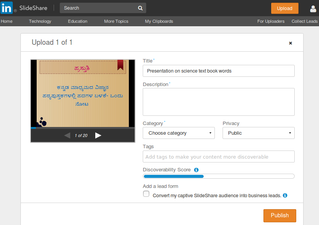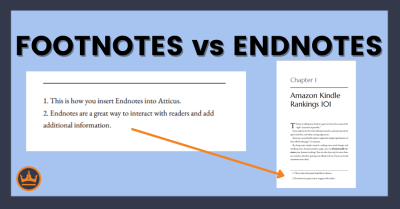Slideshare offers a unique platform for sharing presentations and educational documents, making learning more accessible. By utilizing its vast resources, you can enhance your knowledge and learn from experts across various fields. This tool enables you to create, discover, and share insightful content effectively, fostering an engaged learning community.
Understanding Slideshare and Its Educational Value

Slideshare is a versatile platform that allows users to upload and share presentations, infographics, and other educational materials. Its educational value lies in several key aspects:
- Diverse Content: Slideshare hosts a wide range of topics, from academic subjects to professional skills, enabling learners to explore various domains.
- Expert Insights: Many presentations are created by educators and industry professionals, offering valuable knowledge and perspectives that can enrich your learning experience.
- Interactive Learning: Users can interact with content through comments and discussions, fostering a collaborative learning environment.
- Easy Access: The platform is user-friendly, providing easy access to materials without the need for extensive search efforts.
- Multimedia Integration: Many presentations incorporate videos and images, catering to different learning styles and enhancing retention of information.
Creating an Account on Slideshare
To take full advantage of Slideshare‘s offerings, creating an account is essential. Here’s how you can set up your account:
- Visit the Slideshare Website: Navigate to the official Slideshare site.
- Select ‘Sign Up’: Click on the ‘Sign Up’ button to begin the registration process.
- Choose Your Method: You can sign up using your email, Google account, or LinkedIn profile.
- Fill in Your Details: If signing up with an email, enter your name, email address, and password.
- Confirm Your Email: Check your email for a confirmation link and follow the instructions.
- Complete Your Profile: Once logged in, complete your profile to connect with other users.
Searching for Educational Documents on Slideshare
If you’re looking for quality educational documents, Slideshare is an incredible platform to explore. With millions of presentations, infographics, and documents available, it can feel a bit overwhelming at times. But don’t worry! Here’s how to navigate your way through the vast ocean of information on Slideshare.
First, start with the search bar at the top of the homepage. You can enter keywords related to the subject you want to learn about, like “biology,” “marketing,” or “history.” Here are a few tips to enhance your searches:
- Use specific keywords: Instead of just “history,” try “World War II history” for more targeted results.
- Filter by type: After searching, you can filter results by presentations, infographics, or documents to find exactly what you need.
- Check the most popular uploads: Slideshare has a trending section; the most viewed documents can often lead you to high-quality content.
Additionally, don’t forget to look at the categories listed on the site. They can help you discover new content in areas you might not have considered. You can also follow users or organizations that consistently produce quality educational materials. This way, you can stay updated with their latest uploads.
In summary, with the right keywords and smart navigation, you can significantly enhance your search experience on Slideshare, leading to valuable educational discoveries!
How to Effectively Use Slideshare for Learning
Now that you’ve found some great educational documents on Slideshare, the next step is knowing how to use them effectively. Just viewing presentations is good, but engaging with the content will maximize your learning experience.
Here are some practical strategies to consider:
- Take notes: While viewing presentations, jot down key points, insights, or questions that arise. This not only reinforces your learning but also helps you recall the material later.
- Engage with the content: Don’t just passively read—ask yourself questions like, “How does this relate to what I already know?” or “What can I apply from this?”
- Share and discuss: If you find particularly intriguing slides or insights, share them on social media or in study groups. Discussion can deepen your understanding.
- Download and save: If you find a presentation that you think will be useful for future reference, make sure to download it or save it for offline access.
Incorporating these techniques can transform your interaction with Slideshare from a simple viewing experience into an effective learning journey. Remember, the goal is to not just consume information but to retain and apply it in meaningful ways.
Experiment with different presentations, revisit challenging sections, and enjoy the wealth of knowledge available at your fingertips!
Tips for Finding Quality Educational Content on Slideshare
When it comes to leveraging Slideshare for your educational needs, discovering high-quality content can make all the difference. Here are some handy tips to help you sift through the vast array of presentations available:
- Use Specific Keywords: Start by entering specific search terms related to your topic. Instead of a broad term like “science,” try something more targeted like “photosynthesis in plants.” This helps narrow down to the most relevant presentations.
- Filter Results: Don’t forget to use the filtering options! You can sort results by popularity, upload date, or even by the type of content, such as videos or documents. This helps you find the most useful and recent content.
- Check the Author’s Credibility: Look at who created the presentation. If they are educators, industry experts, or reputable organizations, it’s more likely that the content is reliable and well-researched.
- Read Reviews and Comments: Engage with the community by checking the comments and reviews on a presentation. Feedback from other users can give you insight into the quality and effectiveness of the information provided.
- Look for Visual Appeal: Generally, better-quality presentations will have a professional design, clear images, and well-organized content. If it looks engaging, it’s likely that it’s also well-researched.
By applying these tips, you’ll be well-equipped to navigate Slideshare and find educational content that truly enhances your learning experience.
Sharing Your Own Educational Documents on Slideshare
Sharing your own educational documents on Slideshare can be a rewarding way to contribute to the learning community. Here’s how to do it effectively:
- Prepare Quality Content: Before uploading, ensure your presentation is well-organized, visually appealing, and filled with valuable information. Use clear headings, bullet points, and images to make your content easy to digest.
- Select the Right Format: Slideshare supports various formats, but PDF and PPT are the most common. Choose one that maintains the quality of your slides and is widely accessible.
- Add Descriptive Titles and Tags: A catchy title and relevant tags will help others find your work. Think about what keywords someone might use to discover your content.
- Promote Your Work: Once uploaded, share the link on social media or educational forums. Encourage feedback and discussions around your content to foster interaction.
- Engage with Viewers: Respond to comments and feedback on your presentation. Engaging with your audience helps build a community and encourages others to share your work.
By sharing your educational documents on Slideshare, not only do you contribute to the wealth of knowledge available, but you also have the opportunity to showcase your expertise and connect with fellow learners and educators worldwide.
Best Practices for Using Slideshare in Education
When it comes to using Slideshare effectively in an educational context, a few best practices can truly elevate your experience. Here are some key tips:
- Choose Quality Content: Not all presentations are created equal. Look for slides that are well-designed, concise, and from reputable sources. Check the number of views and likes to gauge the popularity and credibility of the content.
- Engage Actively: Instead of just passively viewing presentations, take notes directly from them. Engage with the material by pausing the slides to reflect on key points and jot down your thoughts.
- Utilize Search Effectively: Slideshare allows you to search by keywords, tags, or categories. Use specific terms related to your study topics to find the most relevant slides.
- Share and Collaborate: Don’t hesitate to share valuable presentations with colleagues or classmates. Consider creating a group where everyone can contribute their findings and resources.
- Follow Experts: Identify educators or thought leaders in your field on Slideshare. Follow them to keep updated on the latest presentations and insights.
- Make Use of Mobile: If you’re on the go, don’t forget that Slideshare has a mobile app. This allows you to learn anytime, anywhere!
- Feedback and Improvement: If you’re using Slideshare to present, welcome constructive feedback. Use it to refine your future presentations and make them even more engaging.
By applying these best practices, you’ll not only enhance your understanding but also enjoy a more dynamic learning experience with Slideshare.
Integrating Slideshare into Your Study Routine
Incorporating Slideshare into your study routine can be a game changer for your learning journey. Here’s how to do it seamlessly:
- Set a Weekly Learning Goal: Dedicate a specific hour each week to exploring new Slideshare presentations related to your courses. This helps structure your learning and keeps you on track.
- Create a Playlist: Similar to curating a playlist of your favorite songs, create a collection of Slideshare presentations that resonate with your interests or study needs. This will make it easier to find content when you need it.
- Schedule Review Sessions: After digesting the content, set up review sessions where you summarize the key points or discuss them with peers. Teaching others is a powerful way to reinforce what you’ve learned.
- Link Learning to Projects: If you’re working on assignments or projects, look for Slideshare presentations that can provide inspiration or additional information. This makes your learning more relevant and applicable.
- Use as Supplementary Material: Consider Slideshare as a tool to complement your textbooks and notes. It can clarify difficult concepts and offer visual representations that aid retention.
- Stay Engaged with Updates: Check in regularly for new content, particularly from educators or professionals in your field. Staying updated can keep your learning fresh and aligned with current trends.
By weaving Slideshare into your study routine, you’ll enhance your understanding and retention of material, making your educational experience not just effective but also enjoyable.
Common Mistakes to Avoid on Slideshare
Slideshare can be a powerful tool for sharing educational documents, but there are some pitfalls you’ll want to avoid to maximize its effectiveness. Here are common mistakes that can hinder your learning experience on the platform:
- Overloading Slides with Text: One of the biggest mistakes is cramming too much information onto a single slide. Aim for clarity! Use bullet points and leave white space to help your audience absorb the material.
- Poor Visual Design: Using cluttered designs or inconsistent fonts and colors can distract viewers. Stick to a cohesive theme that enhances readability and visual impact.
- Neglecting Audience Engagement: Your audience is more than just passive viewers. Ask questions or include interactive elements to keep them engaged and encourage them to think critically about the material.
- Ignoring Data Privacy: Always be aware of what you’re sharing. Avoid posting personal or sensitive information that could compromise your privacy or that of others.
- Not Using Relevant Keywords: To increase visibility, don’t forget to optimize your descriptions with relevant keywords. This helps the right audience find your content.
- Forgetting to Test Your Presentation: Before publishing, make sure to thoroughly test your presentation. Check for typos, broken links, and ensure that multimedia elements play correctly.
By steering clear of these common mistakes, you can enhance your Slideshare presentations and create a more impactful learning experience for everyone involved.
Conclusion and Next Steps for Accessible Learning
As we wrap up our discussion on utilizing Slideshare for educational documents, it’s clear that this platform holds immense potential for creating accessible and engaging learning opportunities. Here’s how you can take the next steps toward maximizing your use of Slideshare:
- Start Small: If you’re new to Slideshare, begin by uploading a simple presentation. Get familiar with the features, such as adding annotations or embedding videos.
- Engage with the Community: Join Groups or forums related to your field of study. Sharing insights and receiving feedback can greatly enhance your understanding.
- Keep Learning: Explore other educational resources on Slideshare. There’s a wealth of presentations available that can inspire your own work.
- Review Analytics: Once your presentation is live, monitor its performance. Look at views, likes, and comments to gauge what resonates with your audience.
- Iterate on Feedback: Use the feedback you receive to refine your future presentations. Continuous improvement is key to effective learning!
By following these steps, you’ll not only improve your own understanding but also contribute to a more informed and accessible educational community. So get started, and happy presenting!


